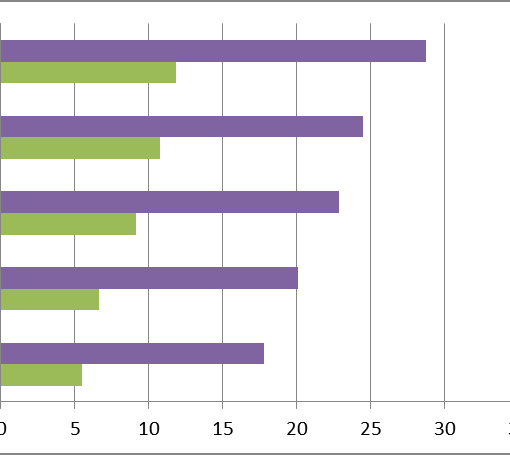For many long suffering inhabitants of the northern half of the United States the arrival of March brings with it a much- anticipated spring. Despite the visual hints provided by a certain Earth dwelling celebrity residing in Punxsutawney, PA, spring is on the way after a brutally cold and record setting deep freeze.
The deepest depth of the latest winter temperatures has put incredible strain on the natural gas supply and transmission capabilities of North American natural gas companies. Several recent estimates state that by month’s end (should temperatures remain below average) total working underground storage numbers in the United States could dip below 1 trillion cubic feet (TCF) for the first recorded time since 2003.
The drawdown on storage numbers is the strongest it has been since the winter of 2008. With injection season typically not ceasing until early to mid-April, there are still several weeks of draws expected to continue as the nation slowly thaws and warms up.
Spring in the oil patch comes with several other benefits and subsequent problems. The most prominent of which is oftentimes referred to as the “breakup.” As snow begins to melt and frozen water surfaces begin to weaken, logistical transport is interrupted as the movement conditions become unsatisfactory. Simply put, the sheer amount of water resulting from the melting of snow takes its toll on dirt roads and service corridors.
While this effect is most prominently and historically impacting the operations in the Canadian oil sands (due to their reliance on heavy machinery to adequately complete the necessary work), it is foolhardy to assume that the effects are not felt across other parts of the United States.
From the Bakken in North Dakota to the Permian Basin in South Texas weather has had an impact on operations for oil companies all across the board, and the changing of the seasons up North should be no different.
One of the biggest issues facing operators in the Williston Basin is the lack an inability to develop a sufficient logistical backbone for the sheer amount of growth the area has experienced.
Long standing backcountry highways have been put under pressure by constant truck traffic, and the continued need to utilize these roads has prevented significant maintenance from taking place. This has undoubtedly forced an increased reliance on makeshift transport routes involving dirt roads and service access streets. The busier the area gets, the more prominent this issue becomes.
So what implication does this have on a stock portfolio? What changes does it generate? In general, companies that rely on mobility and transport oftentimes suffer during these periods. It’s fairly obvious, but when roads are closed and movement becomes tricky, it is fairly obvious how these businesses are affected.
Immediately, oil and natural gas equipment and servicing companies come to mind. These companies make a living frequently moving from well site to well site to complete workover work or finish off fresh drilling. With more and more oil wells coming online every day, and speed-to-completion times being reigned in, their business is still very good.
However, when adverse conditions begin to emerge, trucks get stuck. Roads wash away. Business then becomes more difficult. Split Rock North American Shale Energy managers Tyler Kocon and Mark Cool have seeked to get ahead of the curve by lowering their exposure and taking their profits to certain land-based servicing companies like Haliburton (HAL) and Baker Hughes (BHI) in time for the weather to take its toll by slowing down operations at the tail end of Q1.
At the same time, the movement of WTI oil prices to a level above $100 has generated some increase in prices for the associated Western Canadian Select priced oil. This is among the main pricing structures for heavy oil being produced from the Athabasca Oil Sands. This increase has made Oil Sands production companies more attractive to portfolio managers in recent weeks and resulted in another stake in Cenovus Energy (CVE).
Hard to imagine Spring being on the cusp of arrival with more than 2 feet of snow still sitting on the ground, but rest assured that the worst is over and the thin weakly glowing light at the end of the tunnel is slowly emerging from a deep, dark frigid winter freeze.
DISCLAIMER: The investments discussed are held in client accounts as of February 28, 2013. These investments may or may not be currently held in client accounts. The reader should not assume that any investments identified were or will be profitable or that any investment recommendations or investment decisions we make in the future will be profitable. Past performance is no guarantee of future results.


